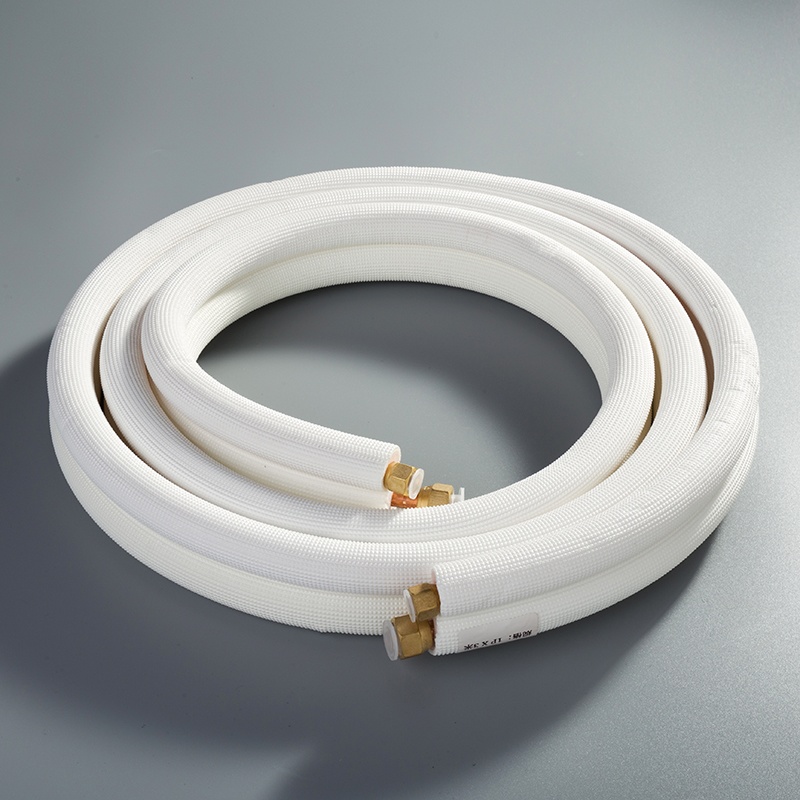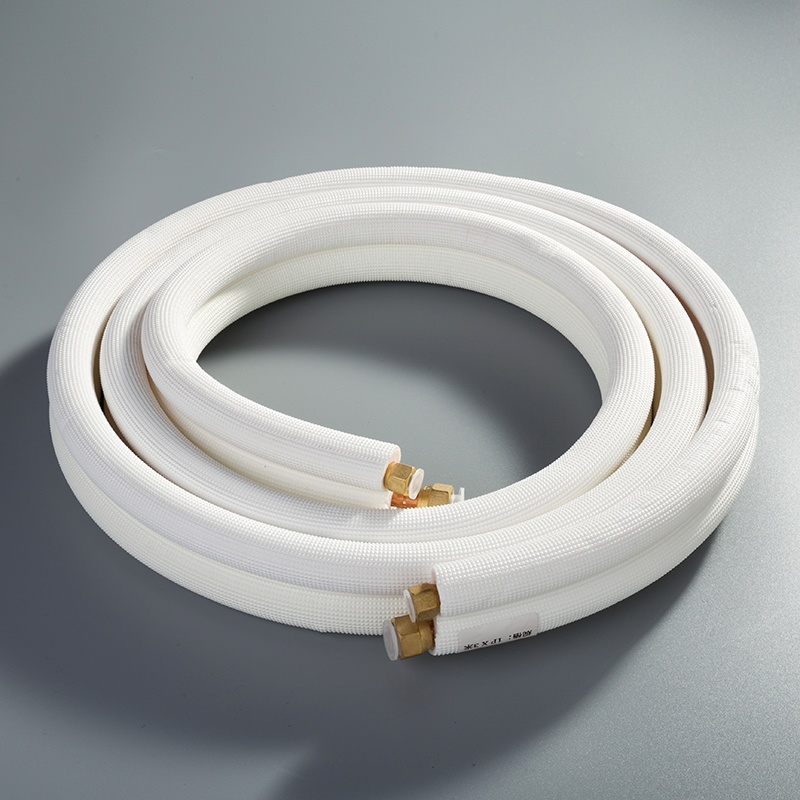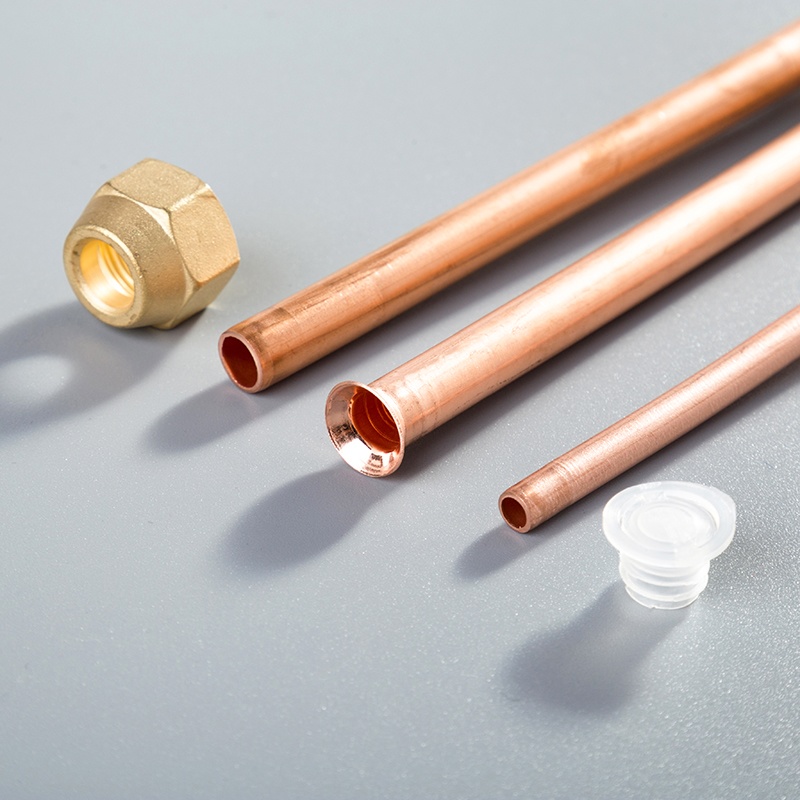Copper vs Aluminum Pipes: Which is Best for Air Conditioning?

In the realm of air conditioning systems, selecting the optimal material for pipes is paramount. Copper and aluminum emerge as prevalent choices in this domain, each boasting distinct characteristics. This blog embarks on a comprehensive comparison of Copper vs Aluminum pipes for air conditioning, aiming to unveil the superior option for air conditioning applications.
Efficiency
When comparing Copper and Aluminum pipes for air conditioning systems, the aspect of efficiency plays a crucial role in determining the optimal choice.
Thermal Conductivity
In terms of thermal conductivity, Copper outshines Aluminum with its superior heat transfer capabilities. The heat pipe thermal conductivity of copper ranges from 1,500 to 50,000 W/m-K, significantly surpassing solid aluminum's 200 W/m-K. This high thermal conductivity makes Copper tubes ideal for applications requiring top-notch heat dissipation.
Copper's Thermal Conductivity:
Copper tube coils exhibit a remarkable heat transfer coefficient that enhances their overall performance.
The exceptional thermal conductivity of copper ensures efficient cooling processes in air conditioning systems.
Aluminum's Thermal Conductivity:
While aluminum tubes are lighter and more cost-effective, they fall short in terms of thermal conductivity compared to copper.
The lower heat transfer rate of aluminum may impact the cooling efficiency of air conditioning units.
Energy Efficiency
Efficiency also extends to energy consumption and cooling performance in air conditioning setups. Copper pipes, with their higher thermal conductivity, contribute to better energy efficiency by facilitating quicker heating and cooling processes.
Impact on Cooling Performance:
The enhanced heat transfer properties of copper pipes lead to improved cooling performance within air conditioning systems.
Opting for copper tubes can result in more effective temperature regulation and faster cooling cycles.
Energy Consumption Comparison:
Due to its superior thermal properties, copper requires less time to reach optimal operating temperatures, reducing overall energy consumption.
Comparatively, aluminum pipes may consume more energy due to their slower heating and cooling rates.
Corrosion Risk

Susceptibility to Corrosion
Copper's Corrosion Resistance
Copper exhibits exceptional resistance to corrosion, making it a durable choice for air conditioning systems.
The corrosion resistance of Copper ensures longevity and reliability in various environmental conditions.
Opting for Copper pipes minimizes the risk of degradation due to corrosive elements, enhancing the overall lifespan of the system.
Aluminum's Corrosion Resistance
In contrast, Aluminum is more susceptible to corrosion compared to copper.
The lower corrosion resistance of Aluminum tubes may lead to maintenance challenges and reduced durability over time.
Aluminum pipes require additional protective measures to prevent corrosion and ensure prolonged functionality.
Longevity and Maintenance
Maintenance Requirements for Copper
Maintaining Copper pipes is relatively straightforward due to their high corrosion resistance.
Regular inspections and cleaning procedures can help uphold the integrity of Copper tubes.
The minimal maintenance requirements for Copper contribute to cost-effectiveness and long-term performance.
Maintenance Requirements for Aluminum
On the other hand, maintaining Aluminum pipes demands more attention due to their lower corrosion resistance.
Protective coatings or treatments are essential to mitigate the effects of corrosion on Aluminum tubes.
Implementing proactive maintenance practices can extend the lifespan of Aluminum pipes and optimize system efficiency.
Ease of Repair
Repair Techniques
Repairing Copper Pipes
Utilizing industry-leading solutions for various repair scenarios, such as SylWrap Pipe Repair Kits and Sylmasta Pipe Refurbishment System, ensures efficient restoration of Copper pipes.
The SylWrap range of leak repair products offers permanent live leak repair capabilities, corrosion protection, and pipeline strengthening, catering to diverse pipe refurbishment needs.
Repairing Aluminum Pipes
When it comes to Aluminum pipes, employing innovative repair techniques like the Sylmasta Pipe Refurbishment System provides effective solutions for addressing maintenance requirements and enhancing system longevity.
The Sylmasta Pipe Refurbishment System delivers reliable outcomes by offering specialized approaches for repairing and maintaining Aluminum pipelines.
Availability of Repair Materials
Tools and Materials for Copper
Accessing essential tools and materials tailored for Copper pipe repairs is crucial for ensuring seamless maintenance procedures and extending the operational lifespan of the air conditioning system.
By incorporating high-quality components from reputable suppliers like Sylmasta, the repair process for Copper tubes becomes streamlined and cost-effective.
Tools and Materials for Aluminum
Equipping oneself with the necessary tools and materials designed specifically for Aluminum pipe repairs is fundamental in mitigating corrosion risks and preserving the structural integrity of the HVAC system.
Leveraging advanced solutions provided by industry experts like SylWrap enables efficient handling of maintenance tasks associated with Aluminum pipes.
Durability

Strength and Flexibility
Copper's Durability
Copper tube coils exhibit exceptional strength, making them highly durable in air conditioning applications.
The flexibility of Copper tubes allows for seamless installation and reduces the risk of damage during handling.
Due to its robust nature, Copper is less prone to cracks or punctures, ensuring long-lasting performance.
Aluminum's Durability
In contrast, Aluminum tube coils offer a lightweight alternative with adequate durability for air conditioning systems.
The strength of Aluminum tubing provides structural integrity while maintaining a lighter overall weight.
Despite being less malleable than copper, aluminum's durability makes it a reliable choice for various HVAC setups.
Wear and Tear Over Time
Long-term Performance of Copper
Over time, the enduring properties of Copper contribute to sustained performance without significant wear and tear.
The longevity of Copper tube coils ensures consistent efficiency in air conditioning operations over extended periods.
With proper maintenance, Copper pipes can withstand environmental factors and continue to deliver optimal cooling capabilities.
Long-term Performance of Aluminum
Similarly, the long-term performance of Aluminum tubes reflects their resilience against wear and tear in diverse HVAC environments.
Despite potential corrosion risks, aluminum's durability enables it to maintain functionality over prolonged usage.
Implementing preventive measures can enhance the longevity of Aluminum pipes and preserve their performance efficiency.
Cost Considerations
Initial Installation Costs
When considering the Cost of Copper Pipes versus Cost of Aluminum Pipes for air conditioning systems, it is essential to evaluate the initial installation expenses associated with each material.
Copper Pipes may incur higher upfront costs due to their manufacturing process and durability. Despite being more expensive initially, the long-term benefits of copper pipes often outweigh the initial investment.
On the other hand, Aluminum Pipes present a more cost-effective alternative during installation. Their affordability can be advantageous for projects with budget constraints without compromising quality.
Long-term Cost Efficiency
Analyzing the Maintenance and Repair Costs alongside the Energy Savings Over Time provides valuable insights into the long-term cost efficiency of copper and aluminum pipes in air conditioning applications.
Copper Pipes, although pricier to manufacture initially, offer substantial savings in maintenance and repair expenses over their extended lifespan. Their durability and resistance to corrosion reduce the need for frequent repairs, resulting in cost efficiency in the long run.
Conversely, while Aluminum Pipes are more economical during installation, they may require additional maintenance due to their susceptibility to corrosion. The associated maintenance costs should be factored into the overall cost efficiency analysis.
Moreover, when assessing Energy Savings Over Time, copper's superior heat transfer capabilities contribute to energy efficiency by facilitating quicker heating and cooling processes. This enhanced energy efficiency can lead to substantial savings on operational costs compared to aluminum pipes.
By weighing both initial installation costs and long-term cost efficiency factors, individuals can make informed decisions based on their budget constraints and sustainability goals.
In evaluating the Comparison between Copper and Aluminum pipes for air conditioning systems, key distinctions emerge. Copper excels in thermal conductivity and corrosion resistance, ensuring efficient cooling and durability. Conversely, Aluminum offers cost-effectiveness but requires meticulous maintenance due to corrosion risks. Based on the analysis, for optimal performance and longevity, Copper stands out as the superior choice. Readers are encouraged to assess their unique requirements when selecting between these materials.
See Also
Benefits of Opting for Copper Tubing in Air Conditioning
The Importance of Pure Copper Tubing for Air Conditioning Efficiency
Exploring Efficiency: Copper vs. Aluminum Tubing in Air Conditioning
The Revolutionary Impact of Pure Copper Tubing on Air Conditioning
Key Advantages of Copper Tubing in Revolutionizing Air Conditioning


